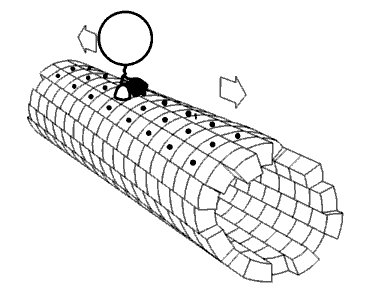
Photo from academic.microsoft.com
Amyloid aggregates are found in many neurodegenerative diseases, including Huntington's, Alzheimer's, and prion diseases. The precise role of the aggregates in disease progression has been difficult to elucidate because of… Click to show full abstract
Amyloid aggregates are found in many neurodegenerative diseases, including Huntington's, Alzheimer's, and prion diseases. The precise role of the aggregates in disease progression has been difficult to elucidate because of the diversity of aggregated states they can adopt. Here, we study the formation of fibrils and oligomers by exon 1 of huntingtin protein. We show that the oligomer states are consistent with polymer micelles that are limited in size by the stretching entropy of the polyglutamine region. The model shows how the sequences flanking the amyloid core modulate aggregation behavior. The N17 region promotes aggregation through weakly attractive interactions, whereas the C38 tail opposes aggregation via steric repulsion. We also show that the energetics of cross-β stacking by polyglutamine would produce fibrils with many alignment defects, but minor perturbations from the flanking sequences are sufficient to reduce the defects to the level observed in experiment. We conclude with a discussion of the implications of this model for other amyloid-forming molecules.
Journal Title: Biophysical journal
Year Published: 2020
Link to full text (if available)
Share on Social Media: Sign Up to like & get
recommendations!